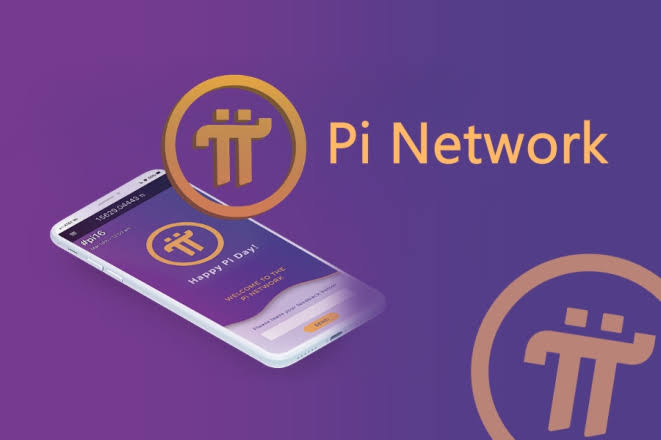Pi Network Cryptocurrency: High Hopes Dashed by Disappointing Exchange Debut
The Pi Network, a cryptocurrency project launched in 2019, garnered significant attention by allowing users to mine its native token, Pi, directly from their smartphones. This innovative approach attracted a vast user base, eager to capitalize on the promise of accessible digital currency. However, the long-awaited transition to an open mainnet and subsequent exchange listings have led to unexpected challenges, leaving many users disillusioned.
Anticipation Builds Ahead of Mainnet Launch
For years, Pi Network enthusiasts, known as “Pioneers,” diligently mined Pi tokens daily, anticipating a lucrative opportunity upon the project’s mainnet launch. The prospect of trading Pi on major exchanges fueled speculation about its potential value, with some community members projecting prices ranging from hundreds to even thousands of dollars per token. This optimism was bolstered by the project’s reported user base of over 60 million individuals.
Disappointing Market Debut
The open mainnet launch on February 20, 2025, marked a pivotal moment for the Pi Network. Tokens became tradable on several cryptocurrency exchanges, including OKX, Bitget, and MEXC. Contrary to the high expectations, Pi’s market performance was underwhelming. The token debuted at approximately $2 but experienced a rapid decline, plummeting over 65% within hours to a low of $0.64. This sharp downturn starkly contrasted with the community’s anticipated valuations. 0
Factors Contributing to the Decline
Several elements have been identified as contributing to Pi’s disappointing market performance:
- Early Sell-Offs: Many early adopters, eager to realize profits after years of mining, rushed to liquidate their holdings, leading to increased selling pressure. 1
- Liquidity Concerns: The sudden influx of sell orders, coupled with limited buy-side demand, exposed liquidity weaknesses, resulting in significant price volatility. 2
- Exchange Support Limitations: While Pi was listed on several exchanges, it lacked support from major platforms like Binance, restricting its accessibility and market reach. 3
- Regulatory and Security Issues: Concerns regarding the project’s legitimacy were amplified when Bybit CEO Ben Zhou labeled Pi Network a scam, citing warnings from Chinese authorities about potential fraud targeting vulnerable populations. 4
User Sentiment and Community Reactions
The unexpected market performance led to widespread disappointment among the Pi Network community. Many users took to social media platforms to express their frustration and reassess their involvement with the project. Some recounted stories of dashed hopes, including individuals who had contemplated significant life changes based on anticipated profits. One user shared, “I was drafting my resignation email when Pi first hit the market, but within just over five hours, its price halved. By evening, I scrapped the letter.” 5
Ongoing Challenges and Criticisms
Beyond market performance, the Pi Network faces additional scrutiny regarding its operational practices:
- KYC Delays: Numerous users have reported prolonged delays in the Know Your Customer (KYC) verification process, hindering their ability to access and trade their tokens. Some have been awaiting approval for years, leading to growing frustration and skepticism about the project’s efficiency and transparency. 6
- Data Privacy Concerns: The extensive personal information required for KYC, including video selfies and government-issued IDs, has raised alarms about potential data misuse, especially given that some KYC data is processed by regional validators or self-registered users, increasing the risks of misuse and identity theft. 7
- Transparency Issues: Critics have highlighted the project’s lack of open-source code and limited communication from the core team, fostering doubts about its true intentions and long-term viability. 8
Looking Forward: Rebuilding Trust and Value
In the wake of these challenges, the Pi Network faces a critical juncture. To restore user confidence and stabilize its token’s value, the project may need to implement several measures:
- Enhanced Transparency: Providing clear, regular updates about project developments, timelines, and decision-making processes can help rebuild trust within the community.
- Accelerated KYC Processing: Addressing9
- Accelerated KYC Processing: Addressing verification delays will ensure more users can access and utilize their tokens, increasing liquidity and participation.
- Strategic Exchange Partnerships: Securing listings on major exchanges like Binance and Coinbase could improve accessibility and price stability.
- Clear Utility and Use Cases: Demonstrating real-world applications for Pi beyond speculation will be crucial in sustaining long-term value.
Conclusion
While the Pi Network’s innovative approach initially sparked excitement, its market debut has left many users disheartened. The sharp price decline, liquidity concerns, and operational issues have cast doubts on its future potential. However, if the core team can address these challenges effectively, Pi may still carve a niche in the crypto ecosystem.
For now, users are left with a crucial decision: hold on in hope of a resurgence, or cut their losses and move on to more established cryptocurrencies. As the crypto world watches closely, the fate of Pi Network remains uncertain, but one thing is clear—expectations must now be tempered with caution.



